The next time you visit the Philadelphia Flower Show, pause and thank the women who helped spark the local resurgence of this ancient craft.
This item is available in full to subscribers.
We have recently launched a new and improved website. To continue reading, you will need to either log into your subscriber account, or purchase a new subscription.
If you are a digital subscriber with an active subscription, then you already have an account here. Just reset your password if you've not yet logged in to your account on this new site.
If you are a current print subscriber, you can set up a free website account by clicking here.
Otherwise, click here to view your options for subscribing.
Please log in to continue |
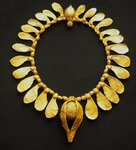
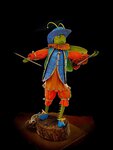
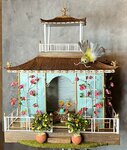
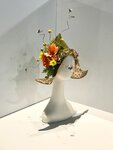
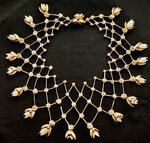

The next time you visit the botanical art showcase at the Philadelphia Flower Show, take a moment to pause and thank the local group of visionary women who helped spark the local resurgence of this ancient craft.
Botanical artists forage common plant materials, which they cut, shape, paint, disassemble, and reassemble into exquisite pieces of sculpture, wearable jewelry, accessories, or costumes. Their work can be whimsical, serious, or even strange, but it is pretty much always breathtaking.
The story of how it wound up at the Flower Show starts with Christine Smart, Cindy Affleck, Joly Stewart, and Ginny Simonin, all from the Wissahickon Garden Club.
In 1990, Smart and Affleck attended a World Association of Flower Arrangers (WAFA) exhibition in Paris, where they were captivated by the stunning displays of botanic art. The exhibition showcased intricate pieces created from a variety of natural materials, including seeds, pods, leaves, and flowers, demonstrating the incredible versatility and creativity of this art form.
Around the same time, Stewart and Simonin traveled to Bermuda to judge a flower show featuring its first Botanical Arts competitive class. They, too, were stunned by how the artists had transformed ordinary plant materials into extraordinary works of art.
Inspired, these women decided to bring this unique art form to Philadelphia, which is home to some of the most passionate gardeners, and artists, in the world.
By 1992, they had organized an inaugural Botanical Arts exhibition at Woodmere Art Museum. Bonnie McCausland and Joly Stewart chaired the exhibition, titled “Visions.” It showcased a class they called “Necklace,” which challenged participants to create wearable art using only natural materials.
The response to the class was overwhelming, with six talented WGC members – Lisa Howe, Alice Farley, Christine Smart, Cindy Affleck, Emilie Lapham, and Gail Irwin – all rising to the challenge. Though most of the participants had limited experience with the specific techniques and mechanics of botanic art, their design skills and knowledge of plant materials allowed them to create some stunning pieces.
The necklaces on display, which featured a range of materials such as mustard seeds, peas, and pressed foliage, all carefully crafted into intricate designs, were a sight to behold. The exhibition was a resounding success, and attracted widespread attention and praise from the local art community.
Building on the momentum of the "Visions" exhibition, Stewart and her fellow WGC members lobbied for the inclusion of a Botanical Arts division at the Philadelphia Flower Show. In 1993, their efforts came to fruition, and the new division made its debut, housed in a tall display case borrowed from the iconic Bailey Banks and Biddle jewelry store.
The inaugural Botanical Arts division at the Philadelphia Flower Show was an invitation-only event, ensuring a curated display of the finest examples of this art form. The exhibits were an instant hit with the public, drawing crowds of admirers.
As interest in botanic art continued to grow, the Philadelphia Flower Show's Botanical Arts division expanded, becoming a perennial favorite among visitors. The success of the division inspired other prominent flower shows, such as the Newport Flower Show and the Atlanta Flower Show, to establish their own Botanical Arts competitions, further cementing the art form's place in the horticultural world.